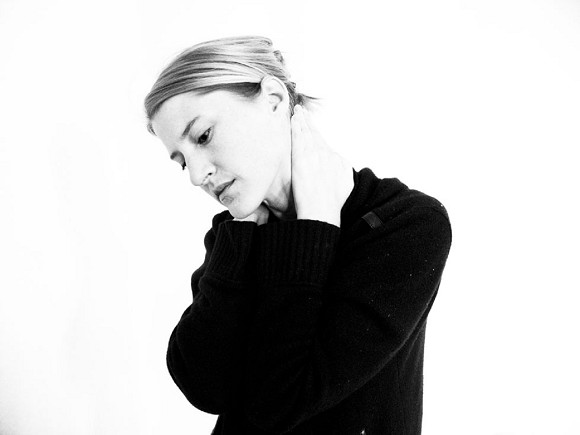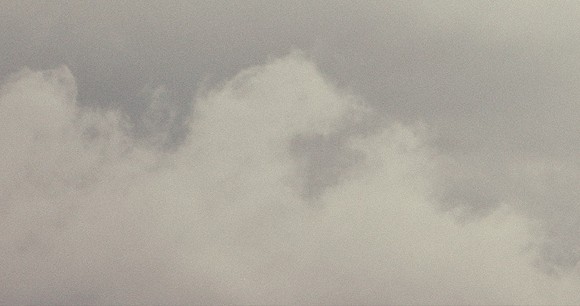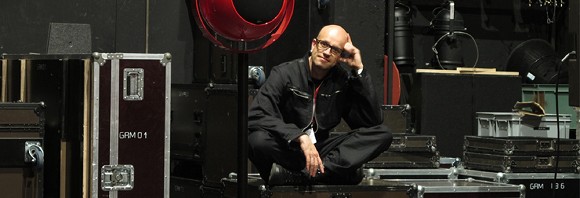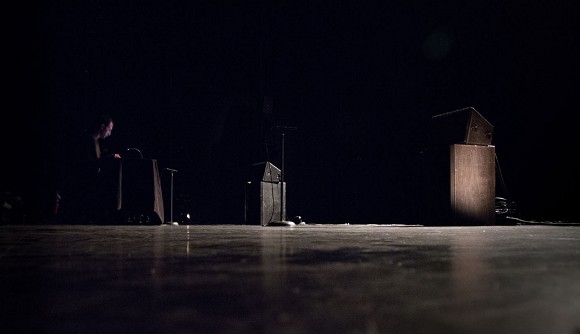Lesley Flanigan, Robert Henke, Tristan Perich
FEED 103113
Doors 19 h
"A constant stream of ideas and sounds that continuously amplify eachother..."
Hidden at first glance, Tristan Perich, Lesley Flanigan and Robert Henke share a significant pool of common ideas and working methods. Each artist derives their material and sonic results from technical processes they carefully shape and design independent from one another, focused to find 'the music within.' Tristan Perich's digital circuits, Robert Henke's software-based synthesizers, and Lesley Flanigan's intricate speaker feedback instruments do not distinguish between process and result, but rather oscillate in a constant stream of ideas and sounds that continuously amplify each other.
The process of instrument building is as much part of the art as the work with the instrument. Each performance not only serves an exploration of the current state, but also seeds ideas for future iterations of the machines. Chance, aleatoric concepts, and happy accidents, are as essential for these artists as careful planning and precise execution. This edition of FEED at KW features the world premiere of these three artists together in an improvised group performance.
Robert Henke
Dust
"I am fascinated by timbre and texture, and every other musical parameter is derived from that. Rhythm is just a specific case of slower oscillation and harmony a subset of timbre. A lot of my works omit the notion of traditional rhythm or harmonic or melodic development at all and focus entirely on the experience of slow evolutions of timbre and sonic textures. The perception of sound is always an experience of time but also of space and I place a deliberate focus on the spatial aspects of my work, often by creating pieces that operate with a lot of speakers or take into account the specific acoustics properties of a performance space.
Presenting my music in a canyon therefor resonates on many levels, and has the potential to become a very unique and remarkable experience. The piece I am going to perform is a version of 'Dust', which is based on a process called granular synthesis that allows me to take my source material - an ever growing collection of sounds I found interesting - and fragment them into millions of little pieces that I can re-arrange during the concert into highly complex and slowly evolving textures." (Robert Henke)
Lesley Flanigan
Amplifications
Lesley Flanigan (New York) sculpts electronic music by hand, using sounds taken entirely from speaker feedback and her own voice. Inspired by the physicality of sound she builds her own instruments using minimal electronics, microphones and speakers. In Amplifications, she performs wooden "speaker feedback instruments", capturing electric rhythms and tones to map a strange sonic atmosphere which includes noise, the warmth of her voice, and the layered actions of amplifying.
Lesley Flanigan is an experimental electronic musician living in New York City. Inspired by the physicality of sound, she builds her own instruments using minimal electronics, microphones and speakers. Performing these instruments alongside traditional instrumentation that often includes her own voice, she creates a kind of physical electronic music that embraces both the transparency and residue of process — sculpting sound from a pallet of noise and subtle imperfections. Her work has been presented at venues and festivals internationally, including Sonar (Barcelona), the Guggenheim Museum (New York), ISSUE Project Room (Brooklyn), The Stone (New York), TransitioMX (Mexico City), CMKY Festival (Boulder), the Roskilde Museum of Contemporary Art (Denmark) and .HBC in Berlin.
Tristan Perich
Noise Patterns
Expanding on Perich's 1-Bit Symphony and tonal works for electronic circuits and acoustic instruments, Noise Patterns is a composition for sequenced 1-bit patterns of white noise, programmed for and performed by microchip. Instead of synthesizing definite frequencies, the code in Noise Patterns outputs random sequences of 1s and 0s. The 'notes' of Perich's 'score' are then varying probabilities of randomness—ranging from the sound of white noise to sporadic instantaneous pops—which he composes into rhythmic patterns. In a tidal wave of 1-bit noise, the music is an investigation into the foundational limits of computation, which surface in the seemingly simple world of randomness.
Tristan Perich's (New York) work is inspired by the aesthetic simplicity of math, physics and code. The WIRE Magazine describes his compositions as "an austere meeting of electronic and organic." 1-Bit Music, his 2004 release, was the first album ever released as a microchip, programmed to synthesize his electronic composition live. His latest circuit album, 1-Bit Symphony (Cantaloupe, 2010) has received critical acclaim, called "sublime" (New York Press), and the Wall Street Journal said "its oscillations have an intense, hypnotic force and a surprising emotional depth." His award winning work coupling 1-bit electronics with traditional forms in both music (Active Field, Observations) and visual art (Machine Drawings, Microtonal Wall) has been presented around the world, from Sonar and Ars Electronica to the Whitney Museum and bitforms gallery.





